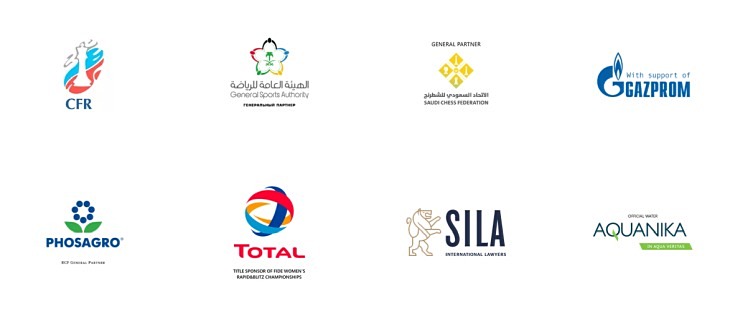The 2019 King Salman World Rapid & Blitz Championships, held in Moscow December 26-30, were one of the most notable chess events of the year. The tournaments brought together many of the strongest chess players, including the World Champion in classical chess who took the crown in rapid and blitz thus simultaneously holding all three titles.
The players and the games
As noted by GM Peter Leko, who was the commentator in the live broadcast from the Moscow event, the rapid and blitz tournaments were “very tricky and tough, as they demand from the players to adapt quickly and swiftly shift between gears”.
Several participants of this event really stand out from the rest.
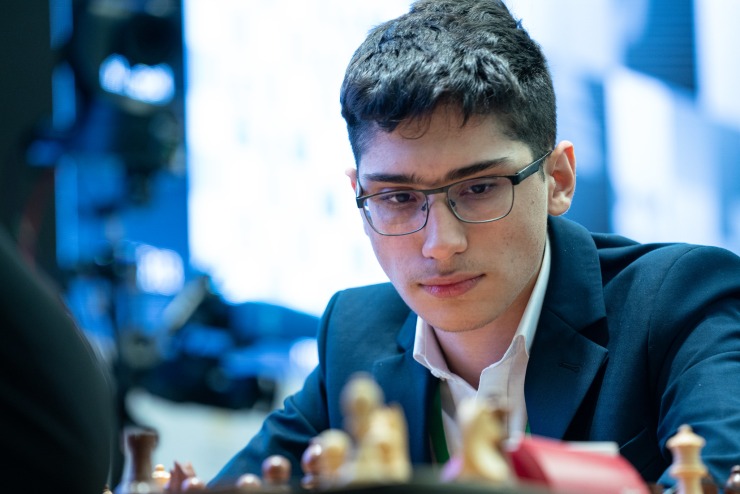
The 16-year-old Alireza Firouzja (rated 2614 in rapid), who participated in the tournament under the flag of FIDE after leaving the Iranian chess federation, turned in an incredible performance, taking second place in the Rapid Championship just behind the World Champion Magnus Carlsen and playing a great blitz tournament. In the first event, he scored eight wins, five draws and had just two losses. The 16-year-old Alireza defeated such heavyweights as the former contender for the title of world champion, Sergey Karjakin, the Isle of Man winner and one of the participants of the Candidates tournament, Wang Hao and Shakhriyar Mamedyarov. His overall performance rating in the rapid reached spectacular 2835 points! Firouzja continued his blast in the Blitz section, where he finished sixth, on 13.5 points out of 21. As the blitz tournament was drawing to a close, Firouzja had all the chances to be in the fight for the first place had he won his game against Carlsen in Round 19 where he lost on time. Given his young age, it can’t but impress that Firouzja managed not just to keep pace with experienced players but also outperform many of them in both Rapid and Blitz competitions.
The final (second) day of the Blitz saw some controversy in the 19th round game between Firouzja and Carlsen. Alireza managed to take control and was two pawns up. The game progressed to an endgame with opposite-colored bishops, with Firouzja creating a passed pawn on the b-file. In the final position, Carlsen had just a bishop, while Firouzja had (the opposite-colored) bishop and three pawns, with both players having seconds on their clock. However, Firouzja ran out of time in a winning position. He was clearly unhappy and there was a debate in the hall among the players and the arbiters whether the game should be declared a draw or not. Firouzja then filed a complaint but not about the result. Rather, he claimed that Carlsen was speaking in Norwegian and disturbed him in the final seconds (which does not appear on the available video footage of the game). The complaint was rejected.
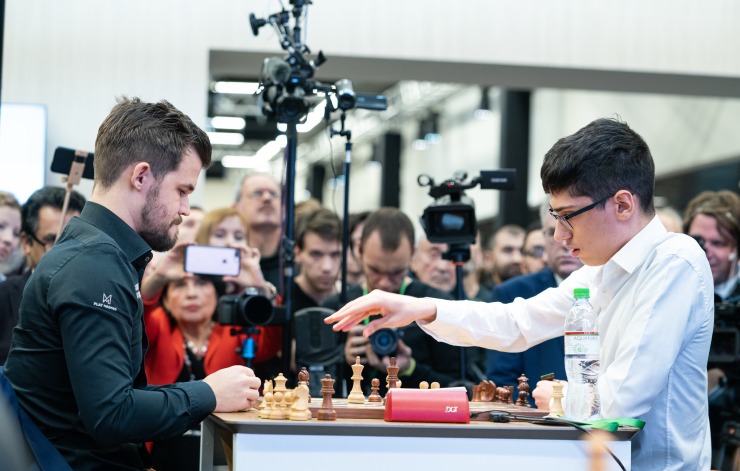
While the Firouzja-Carlsen game got the most attention in chess media, there was also another issue on board eight in the same round, where Anish Giri was playing Shakhriyar Mamedyarov. While no formal complaints have been filed in this case, it was claimed that Giri misplayed a move – putting the piece on one square and then deciding to move it on another just as he was releasing or have released it from his hand. Giri said he wasn’t aware that this happened, adding he would “feel really bad” had he done it. Giri, Mamedyarov and several other players then checked the video footage, but the issue did not escalate further and the game was confirmed as a draw in the scoresheet.
Tense situations happen when players are in time trouble which is often the case in both the rapid and the blitz tournaments. However, according to the arbiters in Moscow, this event was one of the cleanest so far in terms of fair play, which was to be expected given the high profile of the participants.
The nature of the event demanded high-security procedures – both for the players but also for the audience. As spectators had a chance to come close to the boards, they were constantly monitored by the arbiters and reminded of not using their phones close to the boards. Overall, it could be said that this event also showed good coordination between the arbiters and the staff in terms of managing the audience.
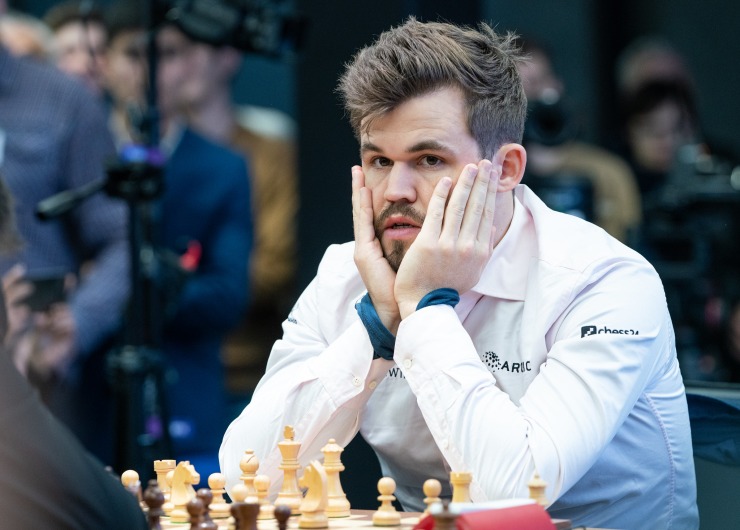
The victory of Magnus Carlsen in both events marked an important milestone in chess history as the Norwegian now holds the crown in all three categories – classic, rapid and blitz. This “triple crown” has only been accomplished two times before: by Susan Polgar in women’s events back in 1996, and by Magnus Carlsen himself, in 2014.
With these two victories the Norwegian breaks yet another record, having won 10 major events over the past year. It would be safe to say that no other sportsman in the world had a better 2019 than Carlsen. In fact, Magnus could claim the top spot on a list of the “best sportsman” of the decade, with 11 World Championship titles under his belt: 4 Classical World Championship titles, 3 in rapid, and 4 titles in blitz (the last three, consecutive).
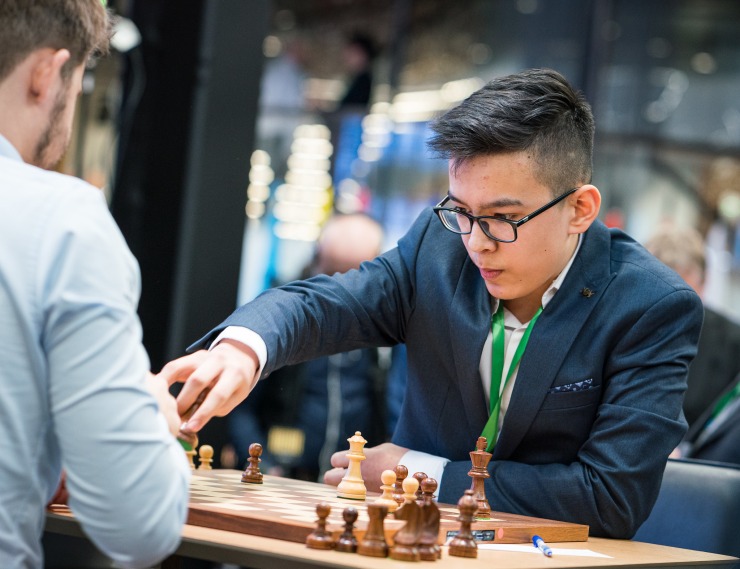
Two more players delivered a strong performance in the rapid and blitz open events. The 15-year-old Uzbek Nodirbek Abdusattorov faced very strong competition in both the rapid and the blitz. He finished on 7.5/15 in the rapid, having played opponents rated at least 100 points higher his 2418. Abdusattorov took a very good start in the Blitz tournament scoring 5/5 before holding Magnus Carlsen to a draw in Round 6. The World Champion missed a crucial move at the end and – according to Abdusattorov – “said a bad word”, but the Uzbek did not make anything of it. The performance of Abdusattorov reminds that of Firouzja in the previous World Rapid & Blitz, where the Iranian-born player started brilliantly but then slowed down. As GM Peter Leko noted, at such a young age and without sufficient experience, it is difficult to play every game against very strong players successfully. However, in the 2019 event Firouzja managed to put in exactly that kind of performance. There are great expectations that Abdusattorov will achieve the same or even go further.
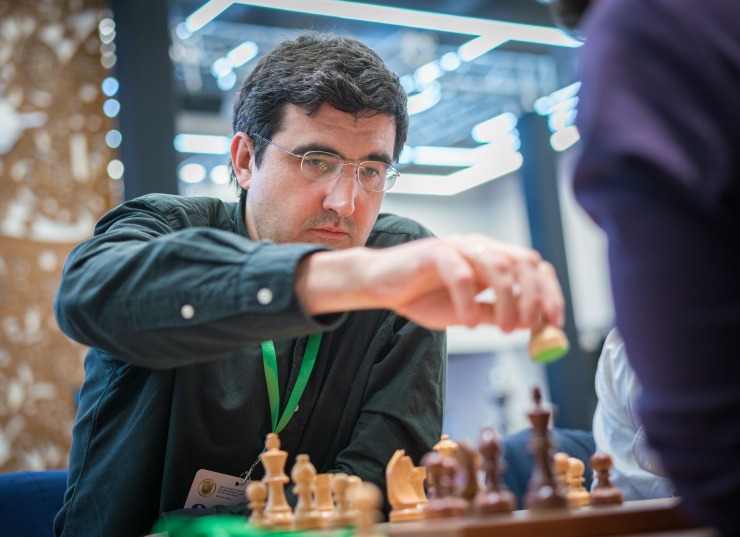
The event in Moscow also saw a brief return of the former world champion Vladimir Kramnik to the playing arena. Kramnik, who retired from competitive chess almost a year ago, played only at the blitz tournament where he managed to clinch the bronze medal, with 15.5 points out of 21. In the first ten rounds, Kramnik suffered two losses (to Sergey Karjakin and Boris Savchenko) and drew two games. In the second part, Vladimir started with five consecutive wins (between rounds 11-15) before drawing with Hikaru Nakamura (who finished the tournament as a runner up) in the 16th round. After drawing with Maxim Matlakov in Round 17, Kramnik lost to Magnus Carlsen in the following round but then picked 2.5 points in the last three rounds. While Kramnik’s return (albeit brief) is surprising – his score isn’t: when he retired from active chess he was one of the best players in the world and, also, one of the experts in blitz. Kramnik’s participation in the event proved to be beneficial for attracting Russian media which helped to promote the event.
The Moscow event witnessed a high-level performance and a close fight in the women’s section. As Peter Leko put it in his commentary – “we had many strong games and overall an incredible fight in the women’s tournaments”.
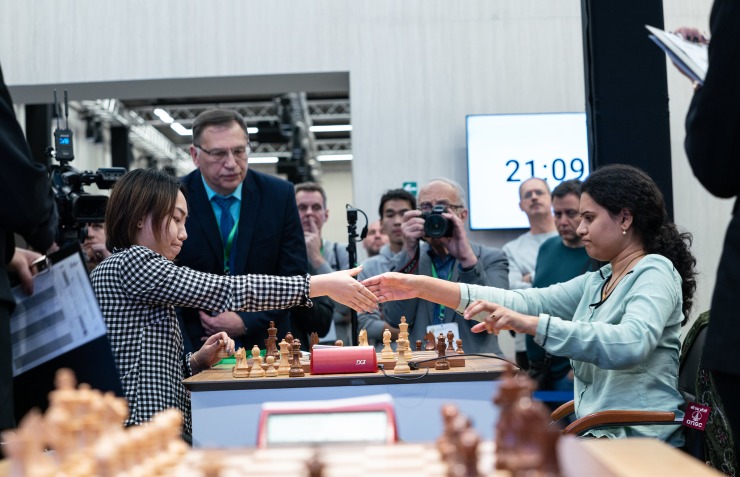
The winner of the Women’s rapid, Humpy Koneru had just one loss in 12 games (in Round 6 to Irina Bulmaga). Koneru won the final two – most critical – games in the rapid and tied for the first place. In the final round of the Rapid Koneru was facing China’s Tan Zhongyi. She sensed her moment and showed great courage as she declined a draw offer from the Chinese as both had only a few seconds on their clock. The gamble paid out and Koneru won, ending up at the top with two other players (Lei Tingjie and Ekaterina Atalik), all having 9/12. The breakdown of the scores showed that Koneru will be playing China’s Lei Tingjie on tiebreak, leaving Atalik with the bronze. After two blitz games, the score was still equal with each player winning one. The victor was decided in the sudden death game, in which Koneru’s resilience and focus prevailed. While Koneru failed to repeat her success in the blitz tournament, she finished 12th out of 122 competitors which is a very good result.

The top two Chinese players, Lei Tingjie and Tan Zhongyi had a very impressive tournament and finished second (after Lei lost to Koneru in the playoff) and sixth respectfully. It would seem that the key moment for both Chinese stars came in Round 9 of the Rapid championship when they were facing each other. Although it seemed that Tan Zhongyi was going to win and have a very strong position at the top, she blundered a bishop and lost. Tan’s loss was Lei’s gain as she gathered momentum. By the final, 12th round, Lei Tingjie was alone at the top with 9/11, followed by Tan Zhongyi on 8.5. Unfortunately, the nerves failed both Chinese players at the very finish.
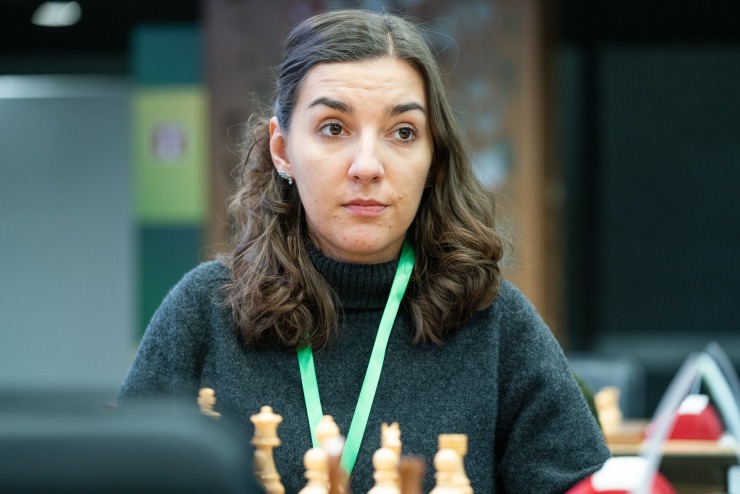
Irina Bulmaga of Romania was one of the biggest surprises of the Women’s Rapid. With rating 2383 she was ranked 24th in the list of participants, but her performance was much better, showing that her rating is more a reflection of an insufficient number of strong tournaments than her actual strength. She started well and was leading in the Rapid on the first and the second days. Her first loss came only in Round 10. She then had a quick draw with her friend, Ekaterina Atalik, but then lost to Natalija Pogonina in the final round, finishing in ninth place on 8/12.
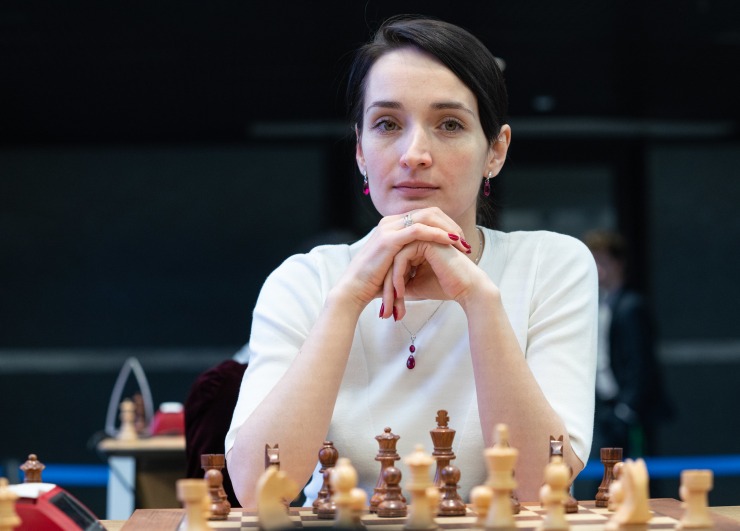
The Blitz event saw Kateryna Lagno repeat her great performance at the same event in 2018, in St Petersburg. Winning the tournament twice in a row shows that her first success was not just a fluke. Kateryna lost just one out of 17 games and surpassed the 2600 rating mark in blitz.
The special prize in the women’s category, for the best combined performance in both the rapid and the blitz, awarded by the French gas giant TOTAL which recently partnered with FIDE to promote chess – went to Anna Muzychuk. She had the best overall performance among the women thanks to a very strong comeback in the second part of the rapid championship. This also shows how important is it to keep fighting even if things don’t go your way at the start.
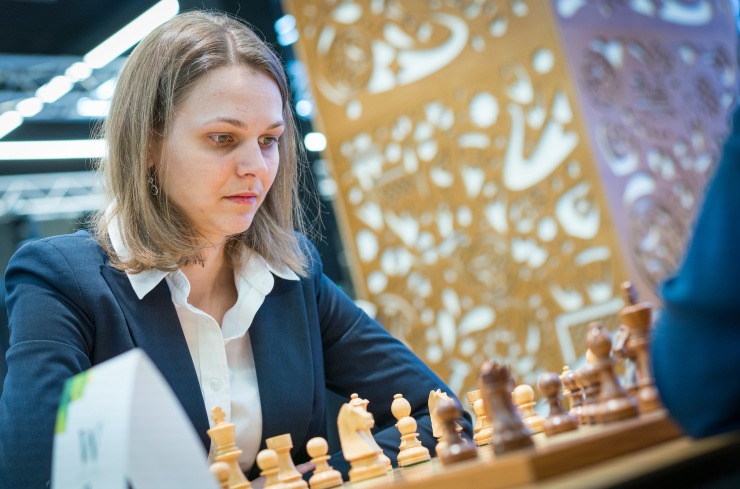
Two of the names which were missing from the tournament in Moscow were Ju Wenjun, who dominated the Rapid in 2018, and Aleksandra Goryachkina. Their match for the World Championship is about to kick off in Shanghai, and with half a million euros at stake, both players decided to skip the rapid play and focus on the upcoming duel.
The organization of the event
The event brought together 330 players from 44 countries. The sheer number of participants coming from many different countries meant this was one of the most demanding events in terms of providing logistics such as organizing travel, transfer to and from the airport, accommodation, dietary requirements, appropriate conditions in the playing hall, facilities for the media and the audience.
The decision to hold the event at the famous Luzhniki stadium – site of the 1980 Olympic ceremony and stage for the 2018 World Cup finals – was welcomed by both players and the audience. Holding important chess events at grand locations and famous places is likely to contribute to promoting the game and to lead to more public and media attention, but other efforts are also needed.
Organizing chess events at prestigious places, however, is impossible without financial support by sponsors. FIDE considers the Moscow event a success in that respect as, aside from securing sponsorship from King Salman of Saudi Arabia and the Saudi chess federation, other high-profile partners have been involved: the Russian companies PhosAgro and Gazprom, and one of the major energy players French company Total.
Text: Milan Dinic
Photo: Lennart Ootes, David Llada and Maria Emelianova
